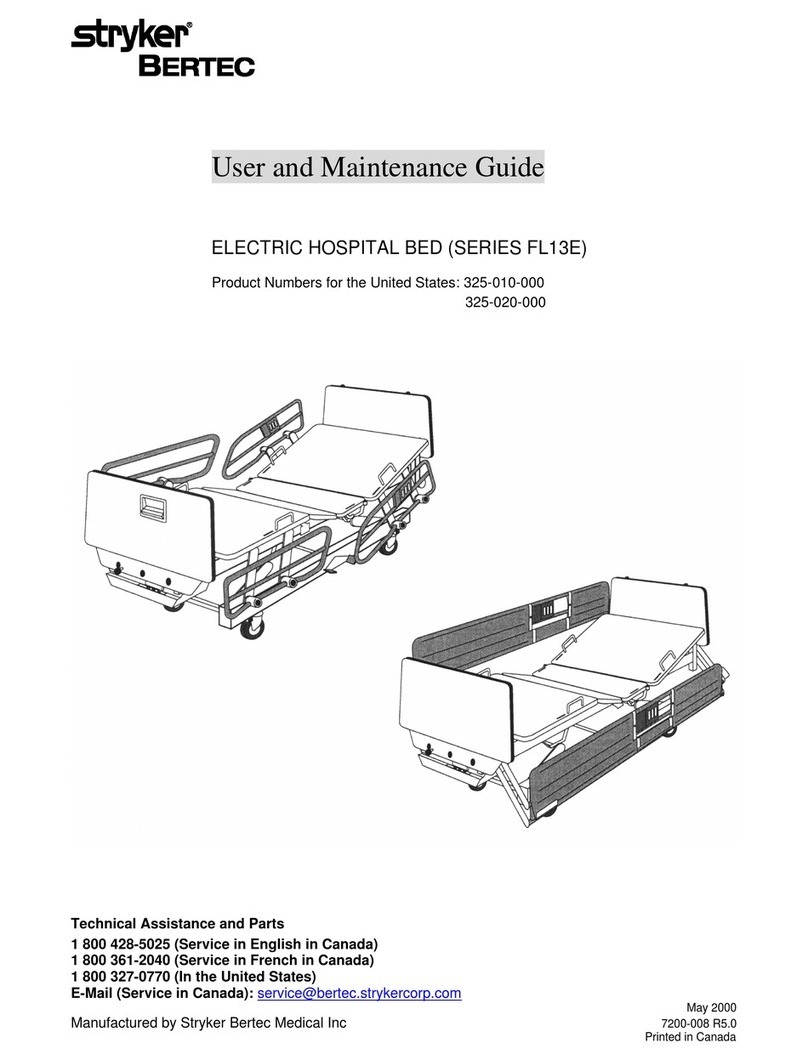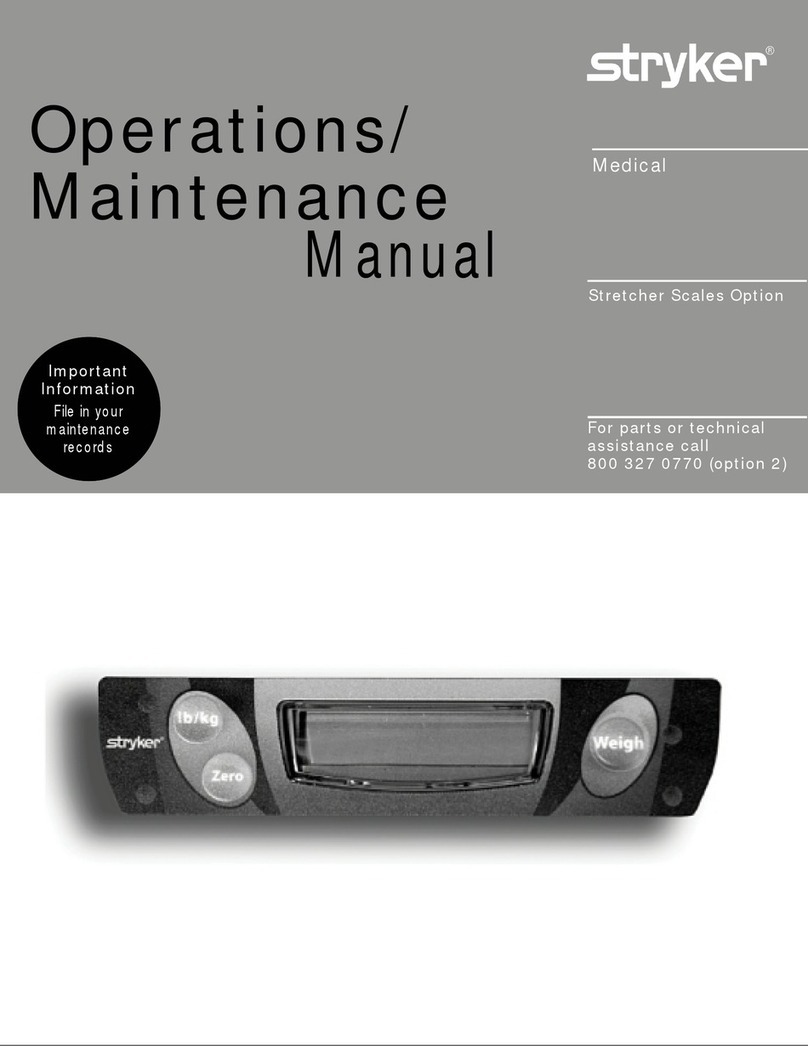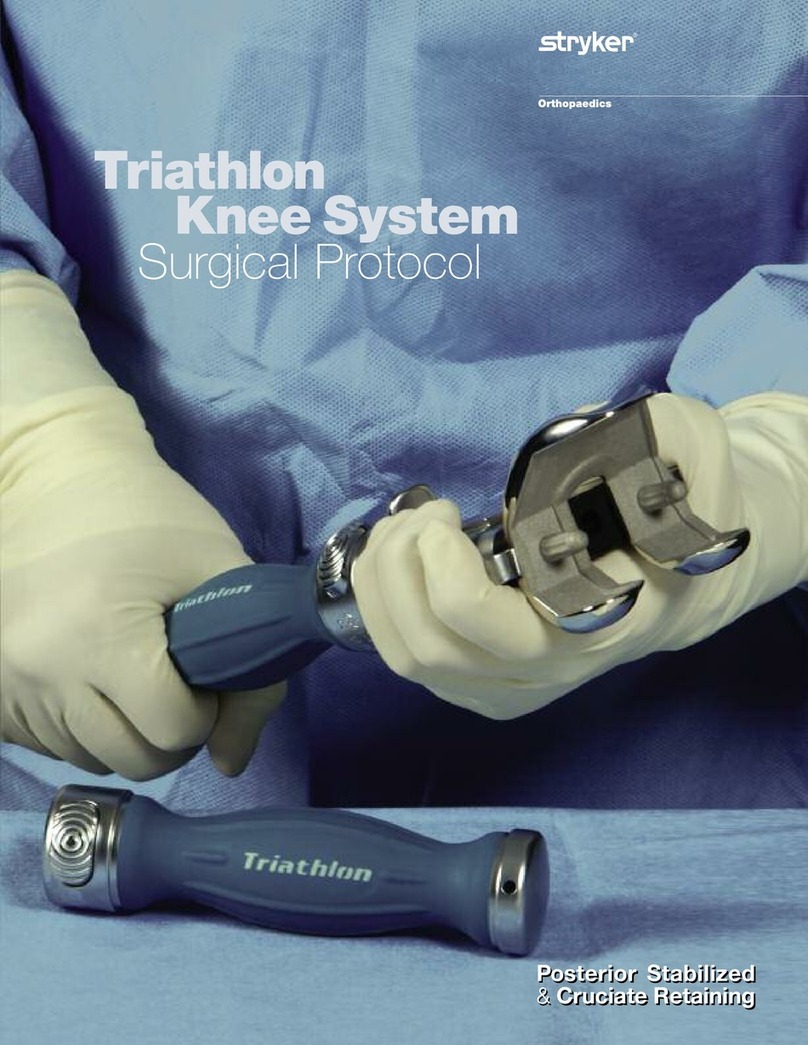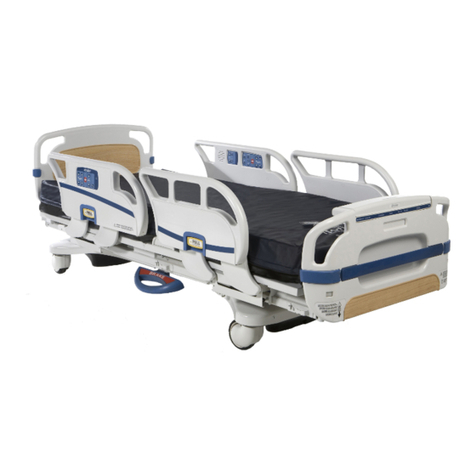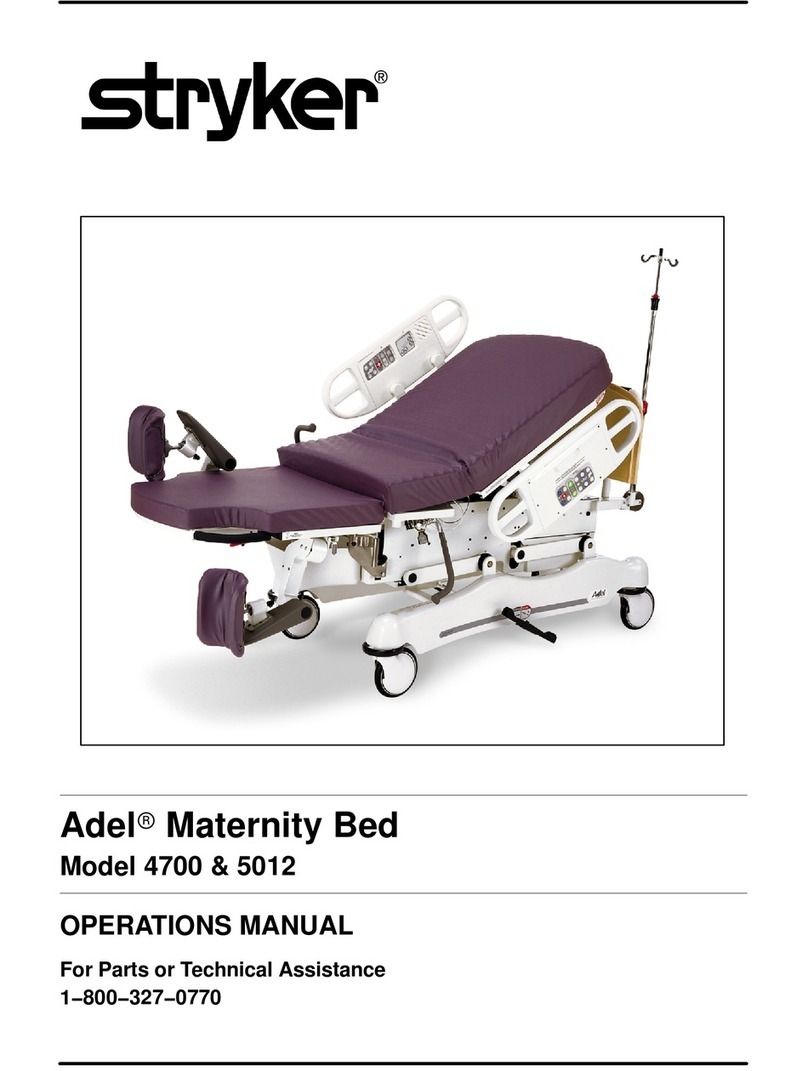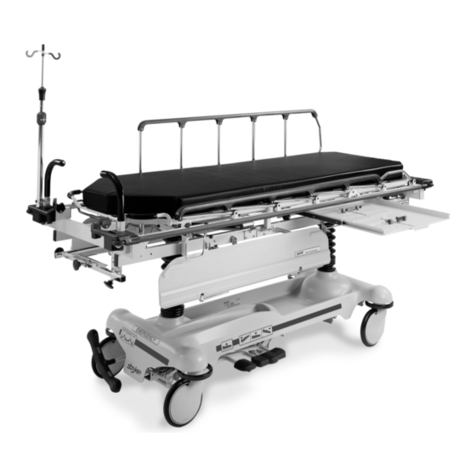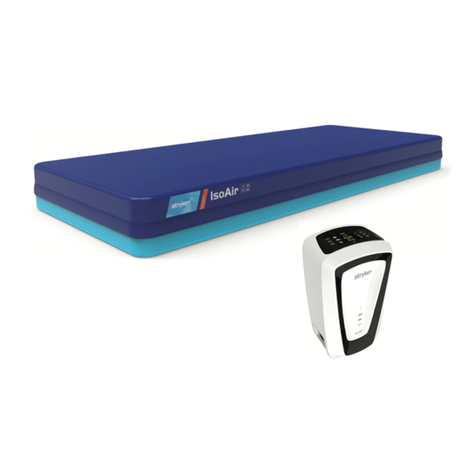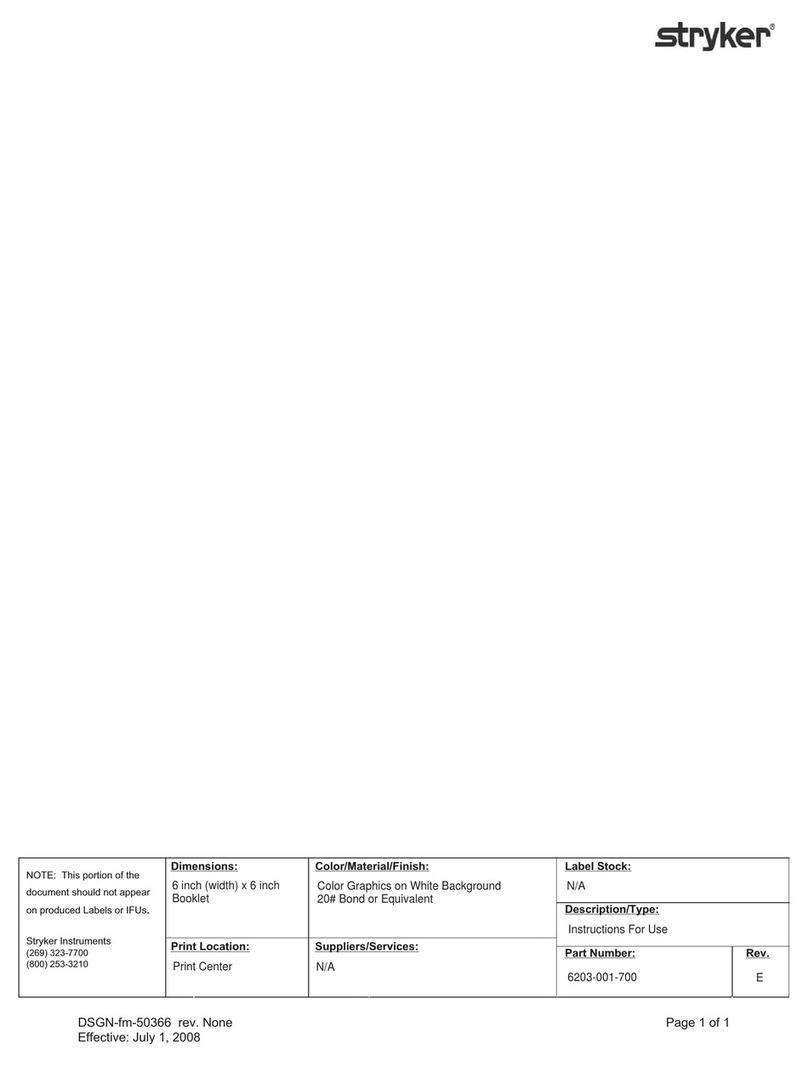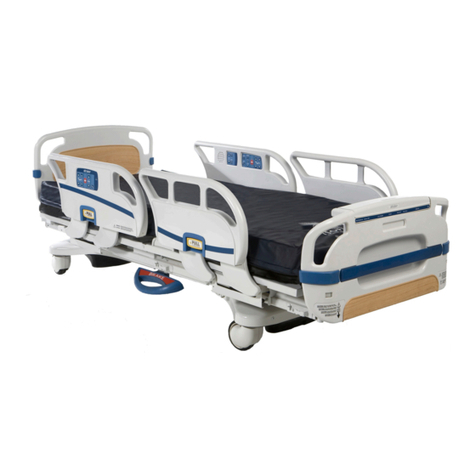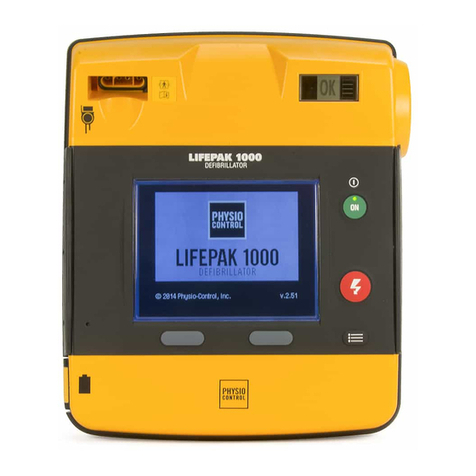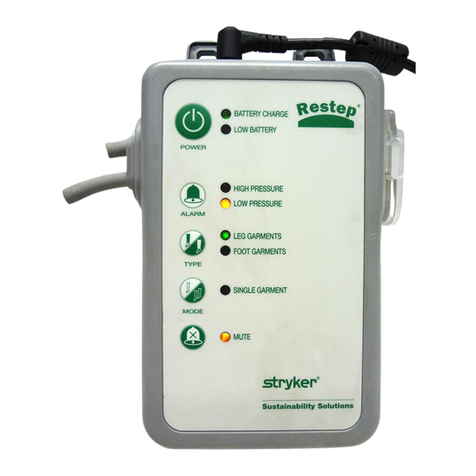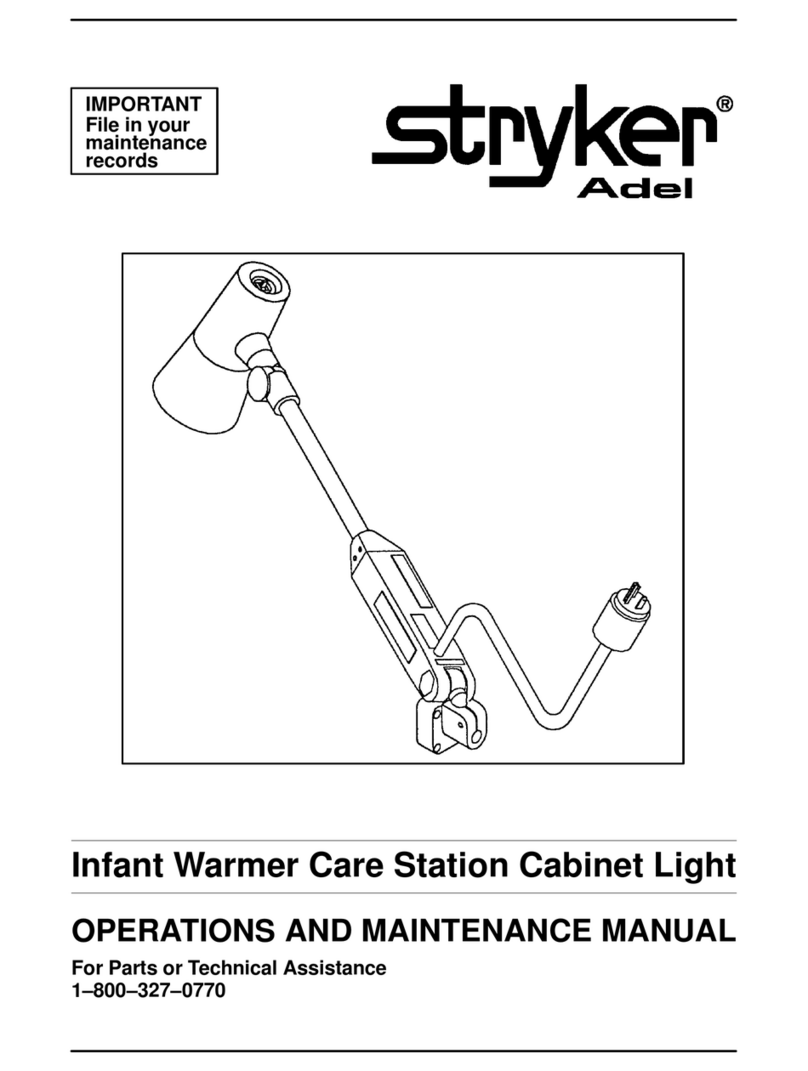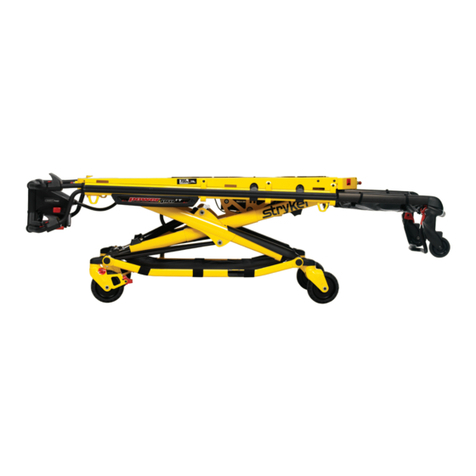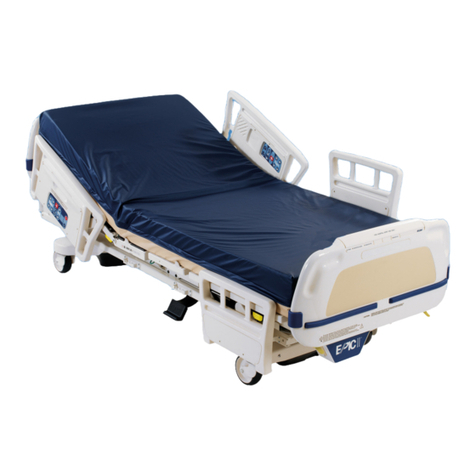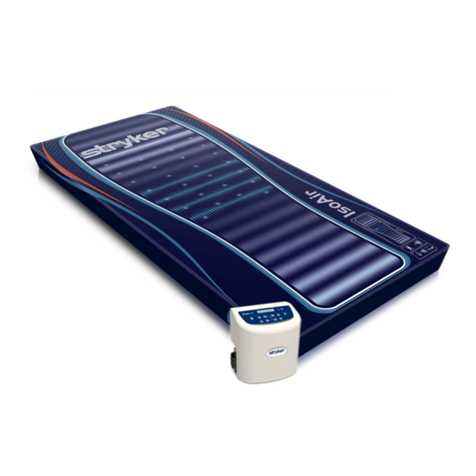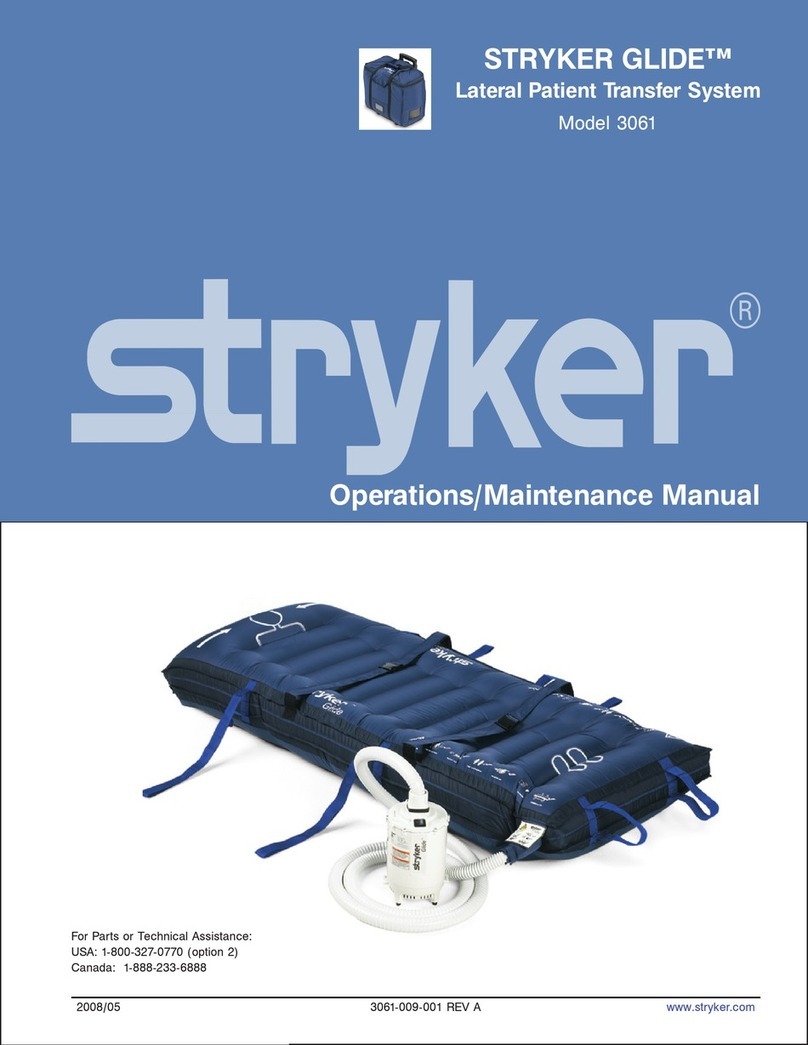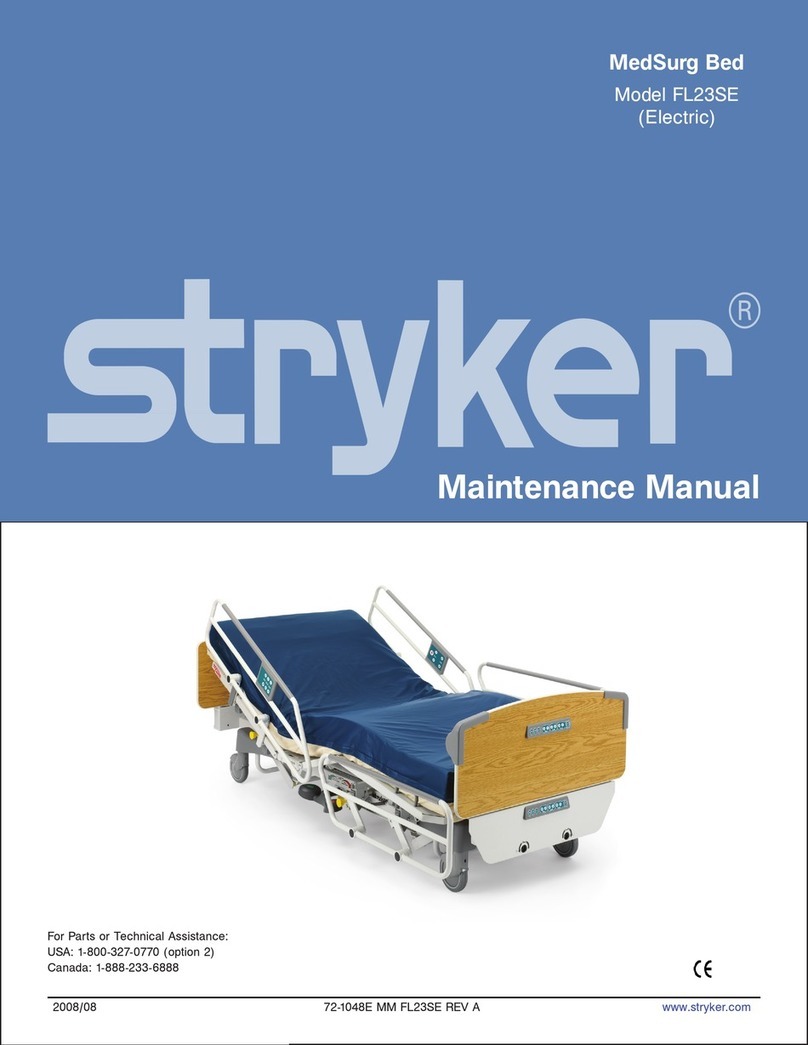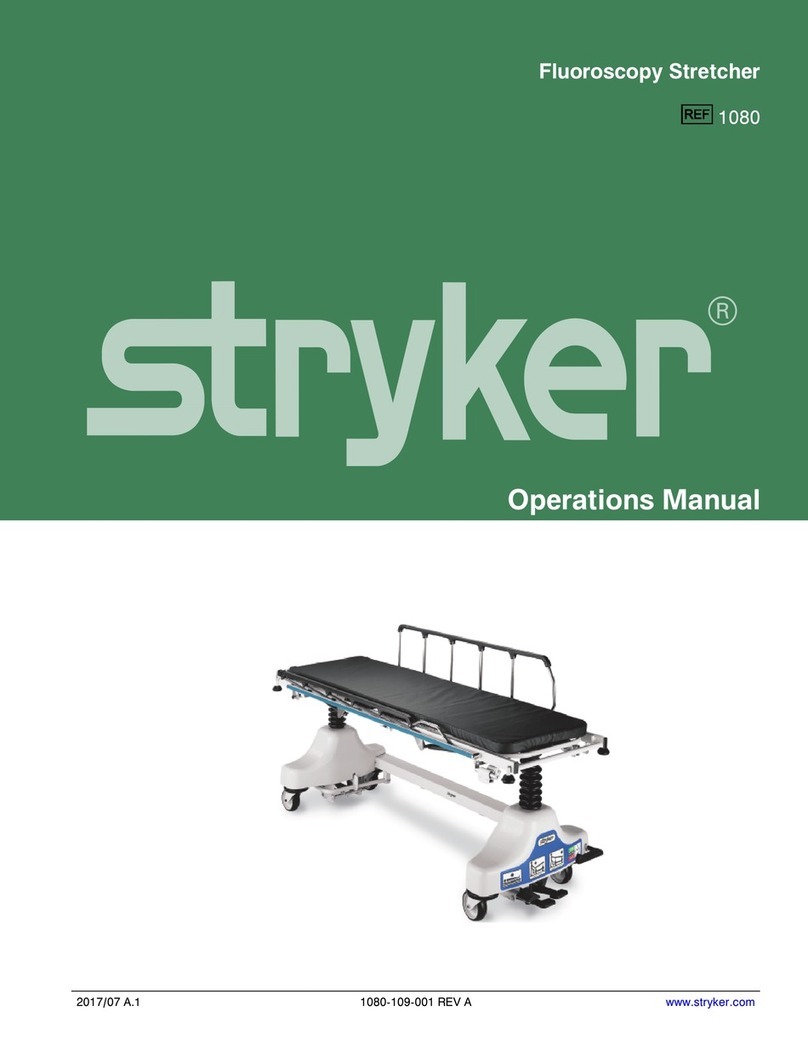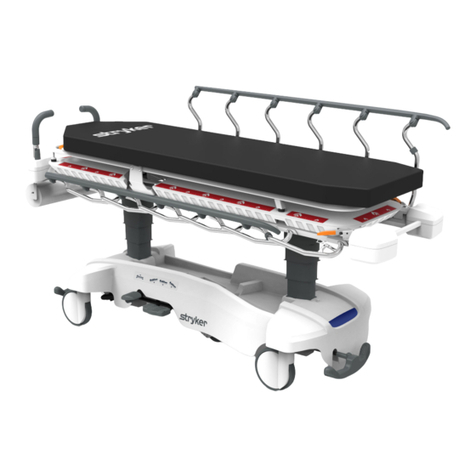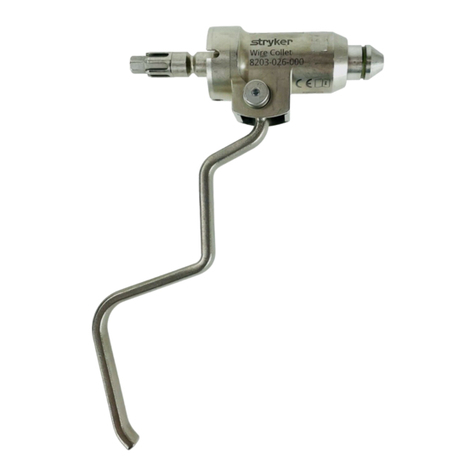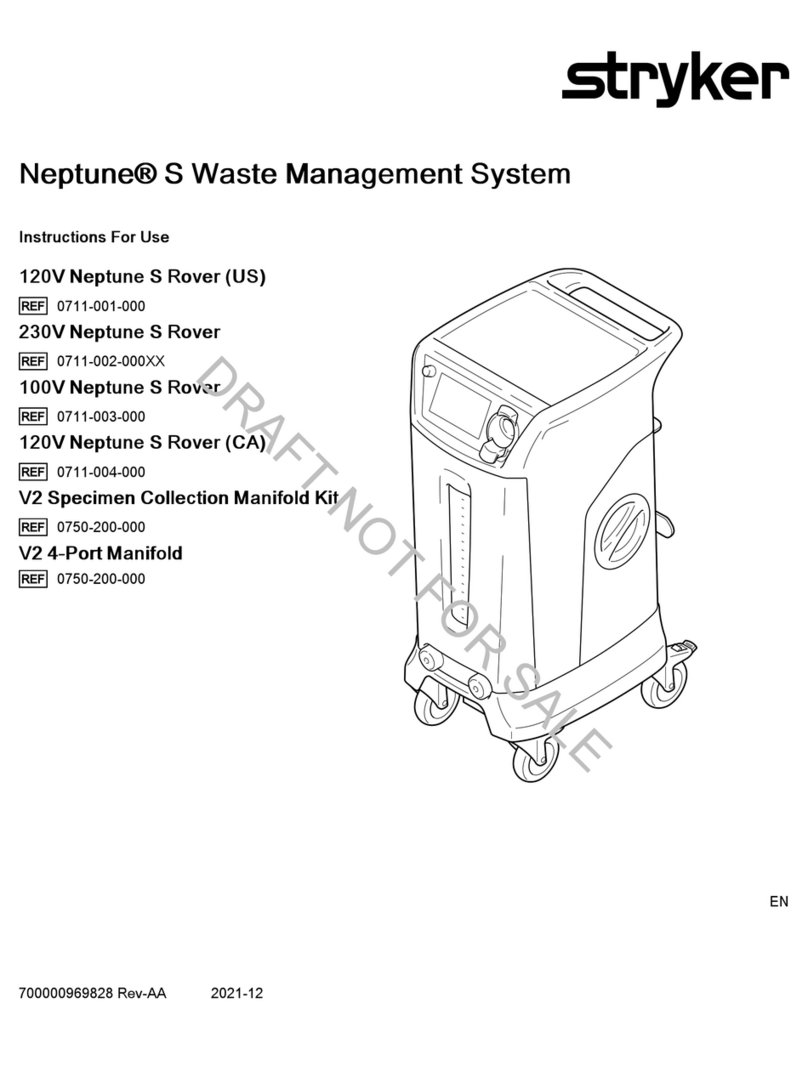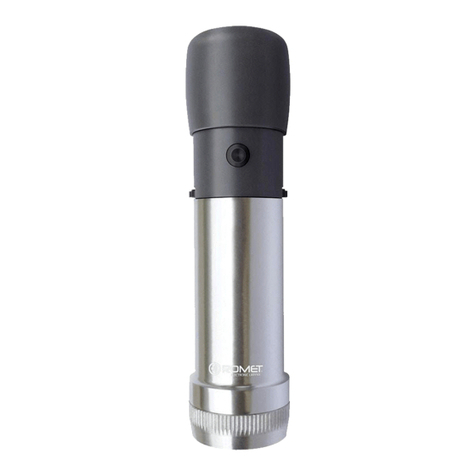
www.stryker.com 2040-209-001 REV B 9
Safety Tips and Guidelines
Return To Table of Contents
CAUTION
Use caution while maneuvering the unit with the drive wheel activated. Always ensure there are no obstacles near
the unit while the drive wheel is activated. Injury to the patient, user or by standers or damage to the frame or
surrounding equipment could occur if the unit collides with an obstacle.
Use caution when transporting the unit down halls, through doors, in and out of elevators, etc. Damage to the
siderails or other parts of the unit could occur if the unit comes in contact with walls or door frames.
If unanticipated motion occurs, unplug the power cord from the wall socket, push the battery power on/off switch
to the ”OFF” position (the LED will not be illuminated) and actuate the drive wheel pedal to the neutral position.
The siderails are not intended to be used as a pushing device. Damage to the siderails could occur.
The use of a mattress overlay may reduce the effectiveness of the siderail.
When attaching equipment to the frame, ensure it will not impede normal operation. I.E.: Hooks on hanging
equipment must not actuate control buttons, equipment must not hide the nurse call button, etc.
Use caution when lowering the bed with items attached to the optional accessory rail. If caution is not used, items
may contact the floor resulting in damage to the items and/or injury to the patient or user.
The lockout buttons on the foot board lock the Fowler, Gatch and Bed Up/Down functions and prevent motion of
the bed. It is the responsibility of attending medical personnel to determine whether these functions should be
locked and to use the buttons accordingly.
Scale function may be affected by siderail/caster interference. With the litter fully lowered or lowered in Reverse
Trendelenburg, the siderails tucked under the litter in the storage position and the casters turned, there is the
potential for interference between the siderail and the caster. Raise the siderails when lowering the litter to the full
down position to prevent the interference from causing the bed’s scale system to weigh inaccurately.
If large fluid spills occur in the area of the circuit boards or motors, immediately unplug the power cord from the
wall socket and push the battery power on/off switch to the “OFF” position. Remove the patient from the unit and
clean up the fluid. Have maintenance completely check the unit. Fluids can short out controls and may cause
the unit to operate erratically or make some functions completely inoperable. Component failure caused by fluids
could even cause the unit to operate unpredictably and could cause injury to the patient. DO NOT put the unit back
into service until it is completely dry and has been thoroughly tested for safe operation.
Preventative maintenance should be performed at a minimum of annually to ensure all features are functioning as
designed. Close attention should be given to safety features including, but not limited to:
Safety side latching mechanisms Caster braking systems
Leakage current 300 microamps max. No controls or cabling entangled in frame mechanisms
Frayed electrical cords and components All controls return to off or neutral position when released
The battery tray assembly weighs 50 pounds. Take care when removing the two hex head screws securing it to
the base frame or personal injury could result.
The 2040 Patient Transport Frame is not intended for pediatric use or for patients under 50 pounds.
Because individual beds may have different options, foot boards should not be moved from one bed to another.
Interchanging foot boards between beds could result in unpredictable bed operation.
The weight of the I.V. bags should not exceed 40 pounds.
I.V. Poles should not be used as a bed push/pull device.
The cleanliness and integrity of both ground chains must be maintained to minimize static build up and
discharge.
Do not add or remove weight when the bed exit system is armed.
The following Caution statements apply to the optional 110 V outlet:
Maximum total load 5 A receptacle rating: 125 VAC, 5 A, 60 Hz.
The total system chassis risk current should not exceed 300 uA
Grounding continuity should be checked periodically.
Do not use for life sustaining equipment.
Use only hospital grade equipment with electrical outlet.
Unplug free standing equipment before transporting the bed.
•
•
•
•
•
•
•
•
•
•
•
•
•
•
•
•
•
•
•
•
•
•
•
•

